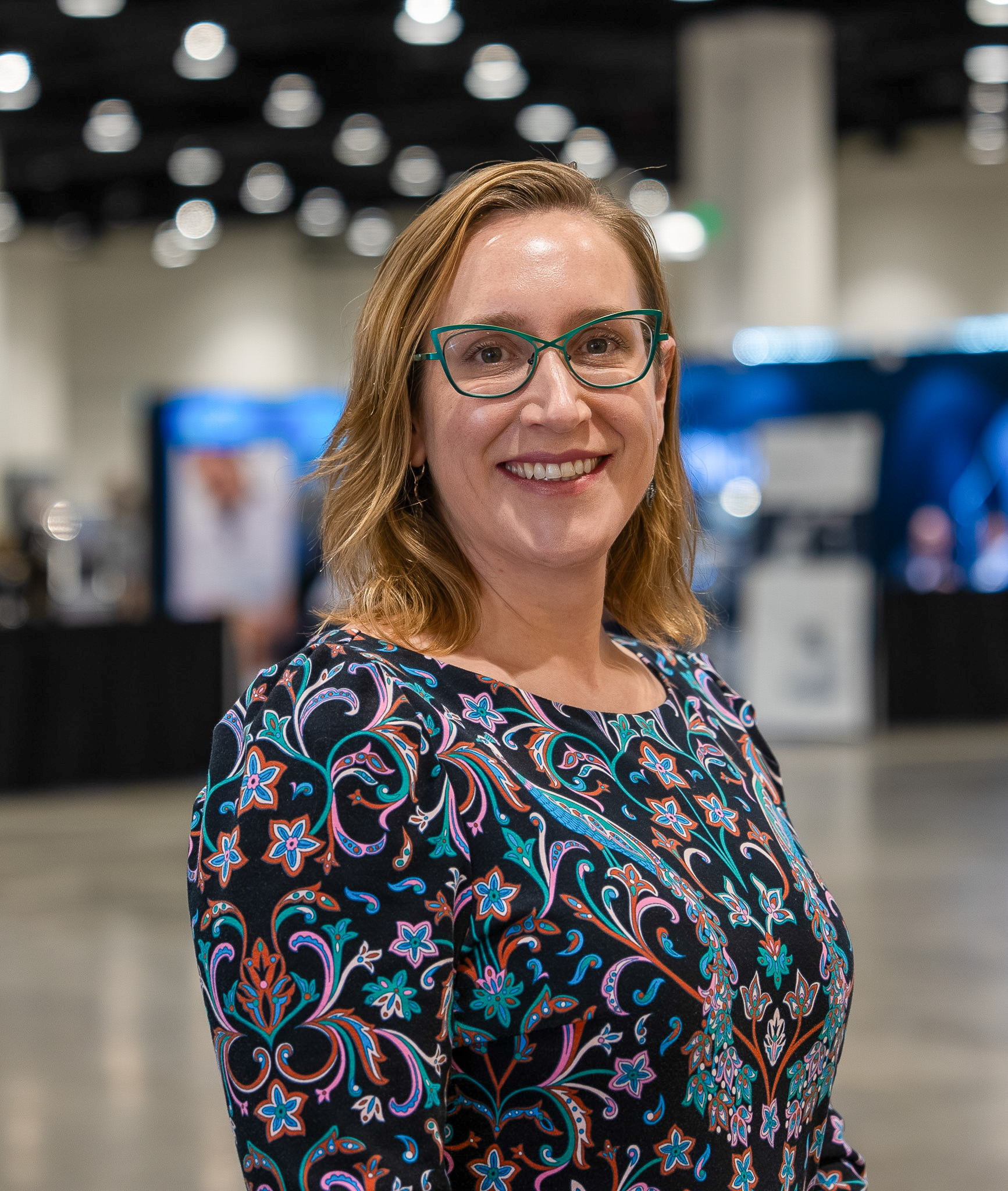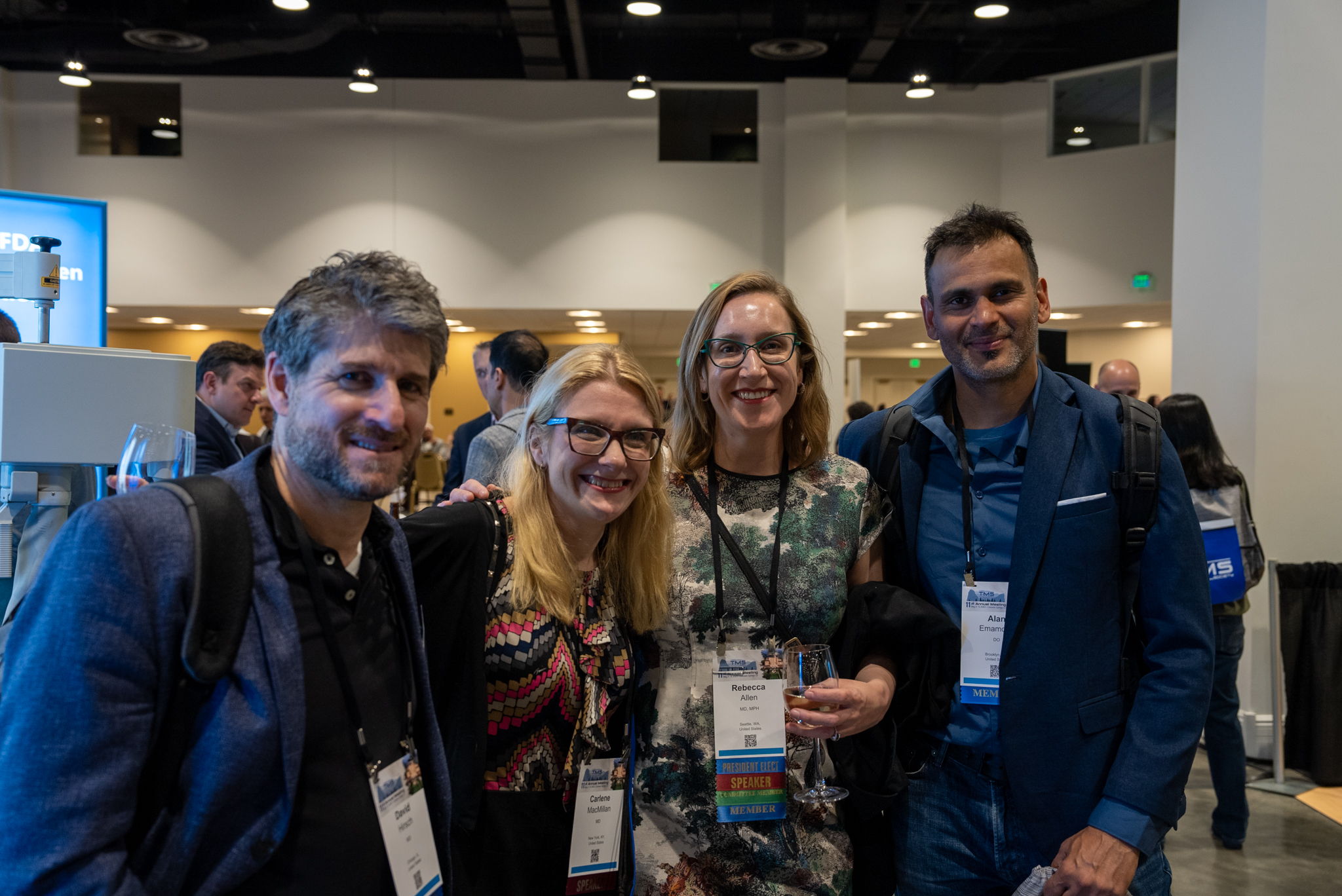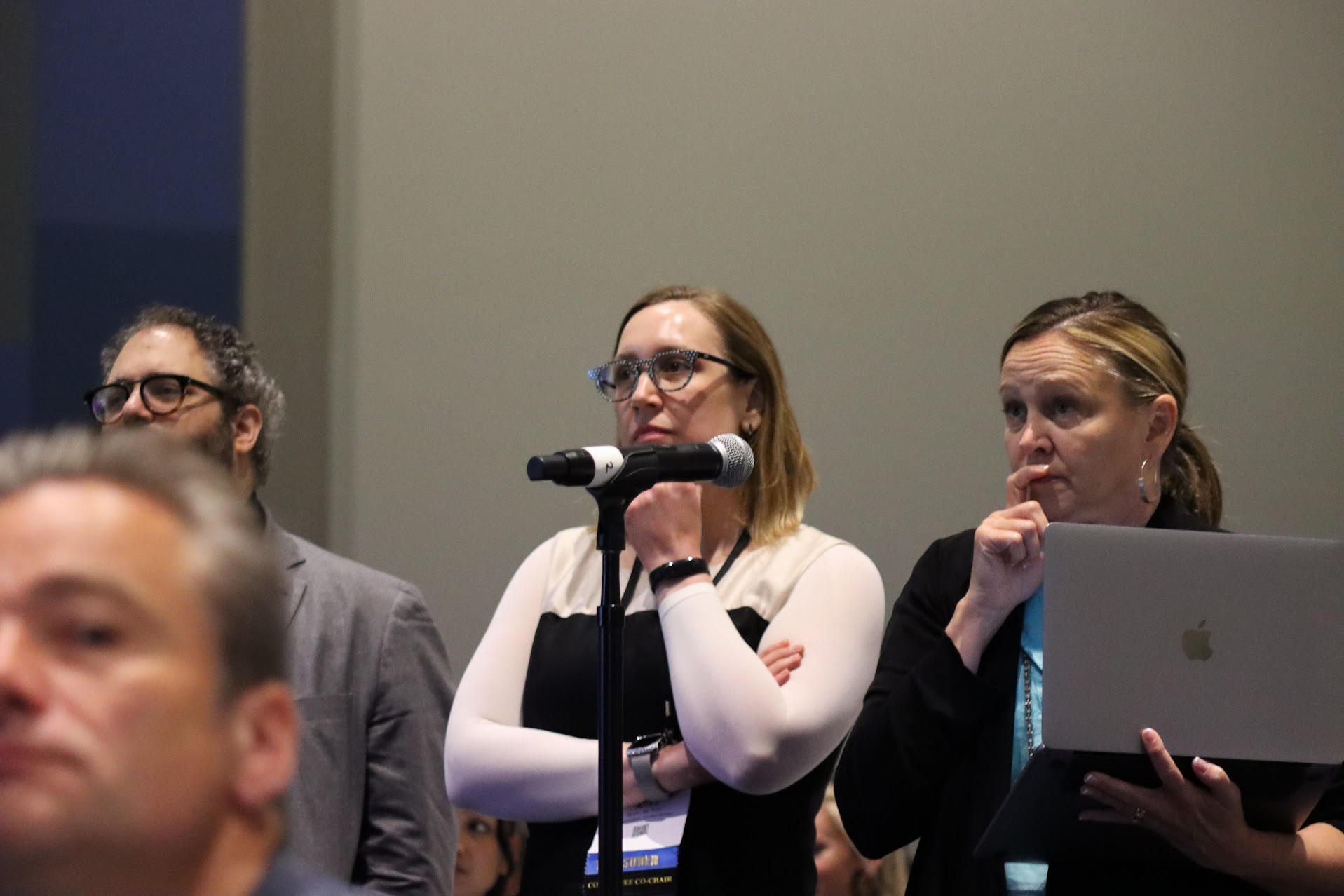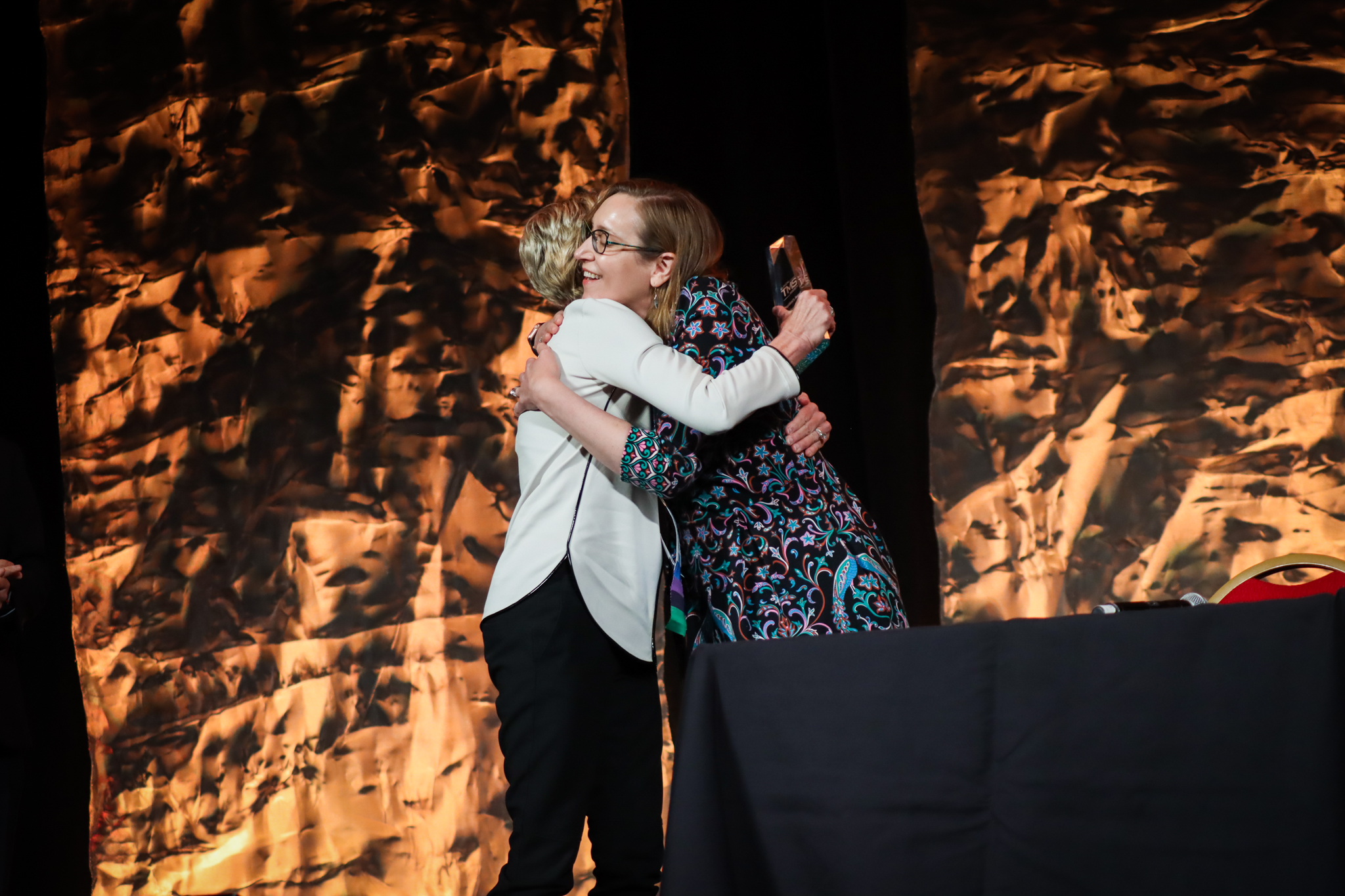Tue, 07/18/2023 - 15:18




Article by Jordan Galerkin - Scientific Writer
Current president Dr. Rebecca Allen has been treating patients with TMS since completing her psychiatry residency program at Harvard Longwood followed by Neuropsychiatry Fellowship at Brigham and Women’s Hospital. In 2017 she joined Seattle Neuropsychiatric Treatment Center (SeattleNTC) and currently serves as the Director of Neuropsychiatry and Research. Dr. Allen’s passion for TMS led her to join the Clinical TMS Society in 2018.
Soon after becoming a Society member, she joined the Insurance Committee and later became committee Co-Chair alongside Dr. Richard Bermudes. Dr. Allen was elected to the Board of Directors in 2019 and then joined the Executive Committee as Treasurer in 2020. After holding the office of Treasurer for two years, Dr. Allen ran for Society President and became the Vice President/President-Elect in 2022.
“I am very lucky to be the president of a Society that works as well as it does,” Dr. Allen says. “We have a great Board this year with a good vibe, and we are tightly connected to our committees. We will get a lot done.”
Dr. Allen views her Presidency as the year to implement large changes that have been discussed over the last few years. “The work of previous Presidents and of those on the Board and Committees has put in place a system and structure where things really get done.” The Immediate Past President, Dr. Mohamed Abdelghani, created three special committees, the Foundation Committee, the Structural Committee, and the Identity Committee. The work of the Foundation Committee culminated in the creation of FACTMS, or the Foundation for the Advancement of Clinical TMS in 2022. “For the Structural [and Identity] Committees, all of these changes were proposed and voted on, but they haven’t happened,” Dr. Allen explains.
Dr. Allen led the Identity Committee during her vice presidency. “Our goal was to take the idea of the Clinical TMS Society from scratch, with no attachments to any bylaws, policies, and procedures that we have…and to just imagine, what do we want to be; what should we be? Who are we, ideally?” The Identity Committee was tasked with answering these major questions. They came up with a new mission statement designed “to add supporting research [and] high-quality evidence-based care.” The Identity Committee also revamped the membership categories and definitions.
“We have separated ourselves from supporting any particular government’s definition of…what kinds of caregivers can provide what kinds of care,” Dr. Allen explains. Despite having the same education levels, providers in different countries may or may not be able to prescribe TMS due to government regulations. “It doesn’t make any sense,” Dr. Allen says. “The only thing that makes sense, as an international organization…is to make membership categories attached to educational background rather than government decisions.”
The Structural Committee was led by Dr. Debbie Stultz. During the last year this special committee decided to reorganize some of the standing committees. “Some of our committees were doing a lot of overlapping work, or the missions of the committees seemed too broad,” Dr. Allen explains. “There is a reorganization going on with two of our committees combining and one splitting in half, in order to make sure the work…is evenly distributed.” In addition, the Structural Committee decided on the creation of regional and specialty councils to provide better support as an international society. “This will create more opportunities for people to become involved in different groups outside of committees,” Dr. Allen explains. “The details of how these groups are going to be formed, defined, and run still need to be worked out, so that is a big project for this year.”
Thanks to her deep involvement in the committee work and decision-making process during her VP year, Dr. Allen was ready to hit the ground running at the Annual Meeting in May. “In advance of the [board] meeting, I spoke with the committee chairs and board members and said…we’re going to assign three deliverables to every committee,” she explains. “By deliverables, I don’t mean a nebulous goal but something measurable that we can know in December and then next May whether it’s been done or not.”
The major decisions made last year now need to be implemented. “The board will have new reserved seats available for members from different categories. There’s a new board seat that will be reserved for a Trainee member, a Research member, and a Non-Physician member. That is a big change,” Dr. Allen explains. “I think those changes are going to help a lot…We anticipate structural changes to happen around January, or that’s the goal. We have two more board meetings between now and then to vote on various details and changes in our bylaws, policies, and procedures in order to get this to happen.”
“Another big project for the year that is going to take multiple committees coordinating, and a task force, is the creation of a Journal,” Dr. Allen says. The idea of creating a Journal for the Society has been around for a while, but just last year the idea really took off as a project of the Research Committee, with the task force led by Dr. Josh Brown. “We have this idea from a scientific and academic perspective what it should look like,” says Dr. Allen. Now, it’s time to get down to the logistics of making the Journal a reality, such as finance, structure, and application processes. “We need to make sure…we are creating a Journal that is sustainable and will give new opportunities to our members,” Dr. Allen says. “We are aware that we have a lot of members who do clinical research on their own…and don’t have big grants or money from the NIH to pay publication fees,” she explains. “We’re really trying to help members who are doing independent projects…to get that work out there.” Dr. Allen hopes to have the Journal up and running before next year’s Annual Meeting.
“I think my role as President is to make sure that everybody does what they’re doing already, does it well, and with enough help so that everyone is sharing the same goals, priorities, and timelines,” says Dr. Allen. Some major changes will occur during her presidency, all with the goal of improving the Society for its members well into the future. “We want to maintain a society of high expertise [that is] also inclusive of different people who are caring for these patients,” Dr. Allen says. “This will hopefully give us the clout to advocate in the way we need to on behalf of all our members and on behalf of all patients.”